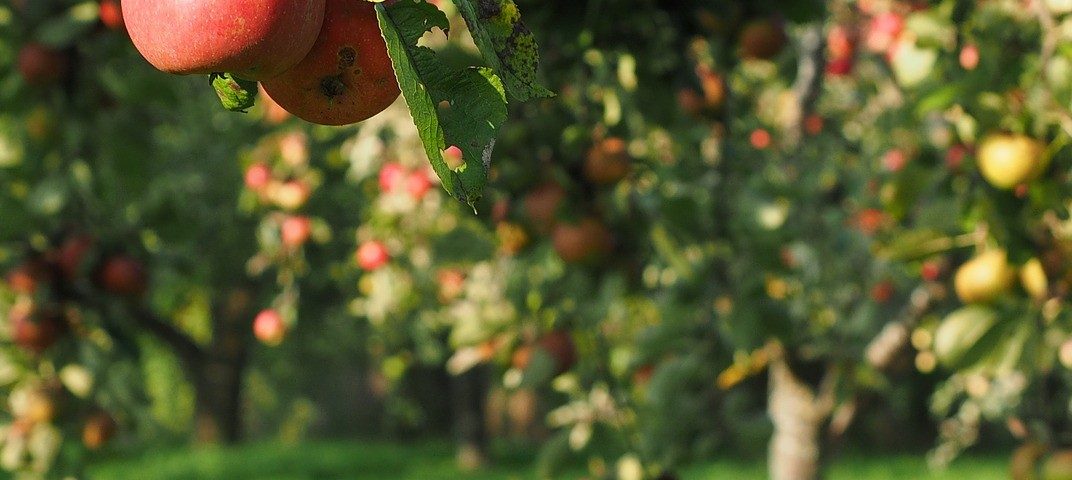3 Advantages of Bare-Root Fruit Trees

3 Advantages of Bare-Root Fruit Trees
*By Shaun Mayfield
‘Wait, you want me to buy a fruit tree after they remove the soil and cut off all the roots?” I hear this often when I am working with clients on their Agriscaping projects. Perhaps you’ve thought or verbalized the same concerns. You’re not alone. However, when we realize the advantages of a bare-root fruit tree over its counterpart, the potted fruit tree, it’s hard to want to buy a regular potted fruit tree (although there are certainly exceptions).
So what is a bare-root fruit tree? Yes, it is just like it sounds. This is a soilless rootless fruit tree. Better explained, these trees start off as normal fruit trees in the ground grown in a nursery for a few years and then dug up while they are dormant. Then their soil is removed and the roots are pruned. Since these trees are processed during their dormancy they are only sold during late fall through early spring. It’s also important to know that only deciduous trees are available as bare roots. This does not include evergreen fruit trees or citruses.
Of course with all things, there are advantages and disadvantages. The advantages are several. The price is very affordable. They can be 30%-50% cheaper than potted trees. Shipping weight is far less for bare-roots which saves you money and you are not paying for the soil or the labor of potting them, making these the most economical. As well as their price, you can drop ship them by the dozens or more to your porch very easily.
Another advantage of bare-roots is trees grown in pots typically have root issues as a result of the pot they are grown in. Oftentimes their roots are encircled and then when they’re planted in the ground it can take years for them to establish a good root system and the encircled roots can even girdle the main trunk and cause it harm or death. Bare-root trees end up developing finer hair roots enhancing the health of the tree. As a result of this, another advantage is bare-root trees can often develop twice as fast as a potted tree especially in their early developmental years. This increased performance is because the encircled roots are not having to transition to the native soil, as bare roots they only know the native soil. So with bare-roots, we are paying less for a better quality tree with a higher success rate & efficiency rate.
Of course, these bare-root trees also have their disadvantages with all things considered. Here some of the drawbacks to take in mind. One consideration is that fruit typically grows a year (or sooner) on a potted tree compared to a bare-root tree. Another more important disadvantage is that bare-root trees are only available for a limited time in the year as previously discussed due to their dormancy requirements. This schedule may not be the most convenient for you and often times it requires a little planning. And the last disadvantage that extends off the previous point is that they also have a small planting window when they do arrive. By nature, not having any roots, they will quickly dry out and die. As a result, they need to be planted almost immediately. After a couple of days go by they will need to be ‘healed’ into the ground which is a temporary planting that can be done by digging a trench and burning the root balls. This is usually done on the north side of a building in the coolest area possible to prevent them from drying out or getting warm and buds begin to break. A good practice is to prep the ground for planting them prior to their arrival. This way the heavy work is completed before the stress of their arrival and planting goes much quicker.
So when do we plant them? The best time is during dormancy. Outside of this window the success rate drastically falls. In warmer regions, bare-root trees will go in the ground between late fall to early winter. In the more northerly colder climates, planting typically is in winter or early spring when the ground is not frozen. The best time to plant is in the late winter to early spring to give the roots a chance to develop prior to the warmer months of summer. If you cannot plant them when they arrive, then ‘healing’ in is an option as stated prior, or you can also store them in a cold garage or shed. You can place wet wood shavings packed around the roots to keep them hydrated.
As you look to plant out your fruit trees this coming year, consider using bare-root trees. You might just be really glad you did!
To find out what webinars or live classes are available for free click here!
* You can find out more about Shaun Mayfield at bluesky.agriscaping.com .

